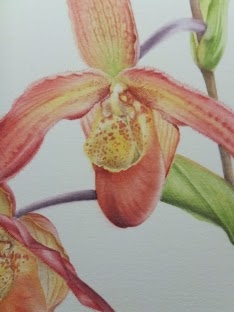“Have no fear of perfection, you'll never reach it.” Salvador Dali
For a while I'd been wanting to try out painting on Vellum and last year, fellow artist and friend Shevaun Doherty gifted me a sample of vellum for me to try. For a year I looked at it, examined it and backed away. what if I spoiled it? what if I wasted it making mistakes and ruined it?
In the end, I contacted William Cowley and bought a sample pack suitable for painting on. Still I waited, there was only one piece of each type and I'd never worked on vellum before.
More research was needed. Luckily some of my Botanical Artist friends have blogged online about their Vellum painting techniques, so I was able to read about how they work with this tricky medium.
Dianne sutherland - Painting On Vellum who also teaches an online course Dianne Sutherland Botanical Art Online Course - Painting On Vellum, Shevaun Doherty of Botanical Sketches and Other Stories: V is for Vellum, Sarah Morrish of Art and the Hedgerow: Painting on Vellum, and Kate Nessler for her article in The American Society of Botanical Artists: Painting on Vellum, all have excellent articles online about painting on Vellum and I learned an enormous amount from them.
Once I had enough information, it was time to practise my technique. I've never been one to practise a piece fully before painting. A few tonal/colour swatches and notes, a trial of a few petals/buds/leaves and I'm off. I've always produced better results when I'm still exploring a subject and there's no point in having my best work in a sketchbook. But there's no room for this with Vellum, it's too rare, so practise I did.
First practise was on paper, then on a small piece of Sheepskin Parchment which was lovely to work on. Fortunately the gooseberries didn't ripen together so there was a steady supply of berrries.
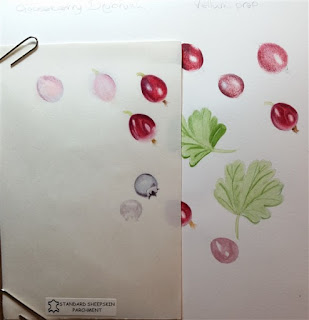 |
| Dry brush practise on Paper, then Vellum (on top) |
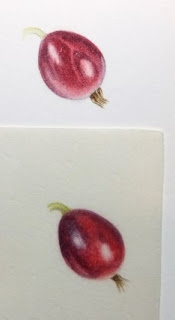 |
| Dry brush on paper above, on Vellum below |
 |
| Dry Brush on Manuscript Vellum |
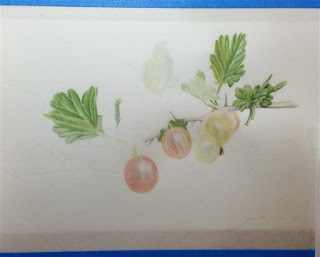 |
| First washes and Dry brush |
 |
| Building up the colours on the berries |
 |
| Hairless Gooseberry - Watercolour on Vellum |
I'm still not sure how I feel about painting on vellum, but I have a little more, so will try it again when I find the right subject. What do you think, are you tempted to try it?
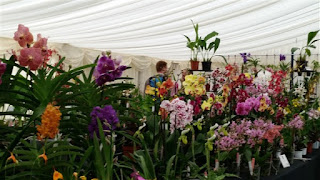






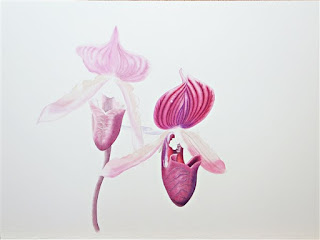
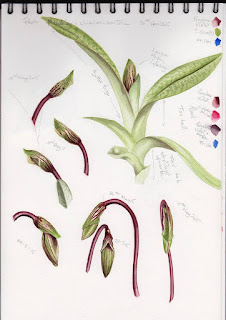





.jpg)
.jpg)
